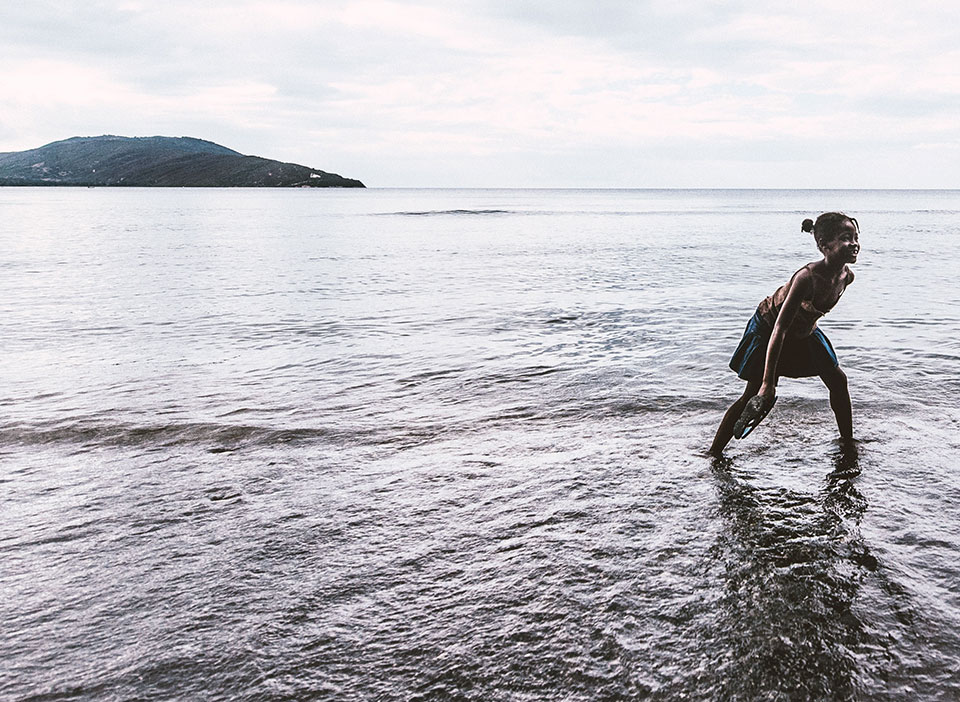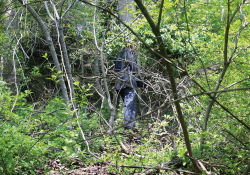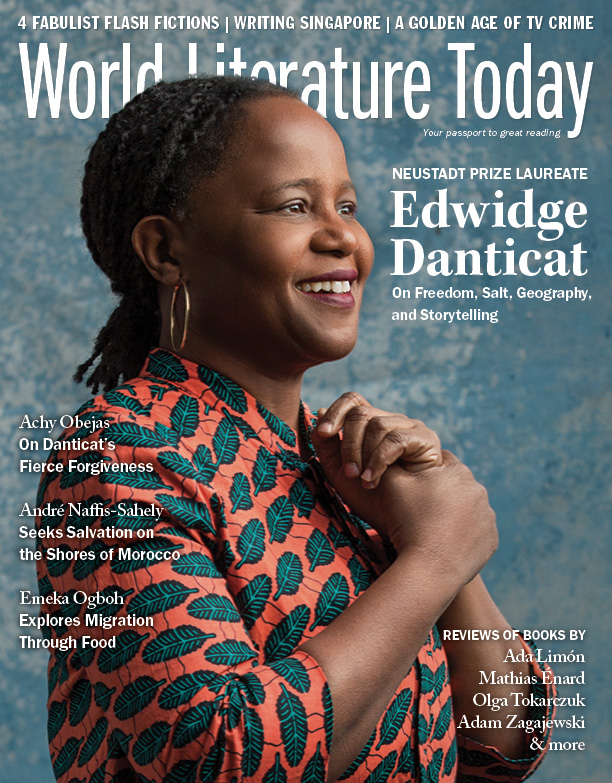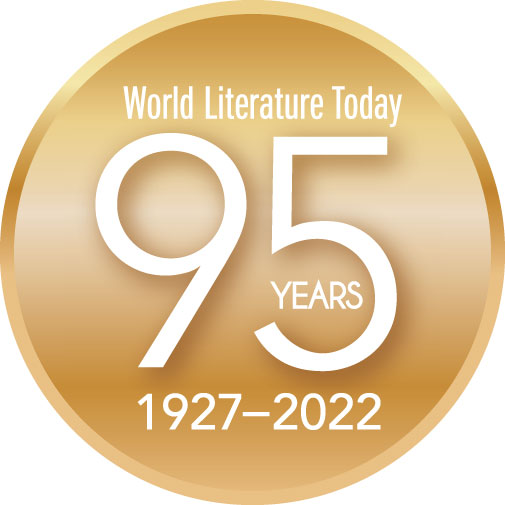“Stretching the Limits of Silence”: Witness and Resistance in Edwidge Danticat’s Nonfiction

Reflecting back over Edwidge Danticat’s nonfiction, Renee H. Shea finds much to be grateful for in Danticat’s extension of her personal stories into political and social issues and, ultimately, providing the solace of words through life and loss.
For the more than twenty years I’ve known Edwidge Danticat, she’s described writing as a “dangerous job”—a point emphasized in Create Dangerously: The Immigrant Artist at Work (2010). In this book as in her other nonfiction, Danticat explores themes familiar from her novels—family, memory, and migration. But it is in the nonfiction that she extends her personal stories most explicitly into political and social issues. Some call her a literary activist, others a firebrand, an iconoclast; some designate her a public intellectual. Regardless of the label, though, we turn to her nonfiction to hear the voice of an intensely private individual and an increasingly assertive activist.
A bit of a paradox, perhaps, yet we’ve heard the power of a whisper in her fiction. I met Edwidge to do an interview a few months after the publication of Breath, Eyes, Memory when my colleague, Marie Racine, introduced us. Quiet and shy, Edwidge brightened when Marie, French professor to me and beloved Haitian mentor to this young writer, began by explaining that they needed to have a few words in Haitian Creole before we got started. I’m still not sure what they had to say, but after that Edwidge opened up and began to talk about this debut novel that had everyone talking. Reviewers commented on the brutality and pain expressed in such beautiful prose; at readings, someone was bound to remark on their surprise that this seemingly gentle person could write so eloquently about violence and suffering. That same paradoxical combination characterizes her nonfiction as her lyrical narratives express hard truths in a tone of confident resistance. Whether she is writing human-interest stories for popular magazines, elucidating the role of art and the artist for academic journals, or challenging current policy and practice, I’ve learned to rely on this remarkable writer to “stretch the limits of silence” (Essence, May 1996), to take a stand, however dangerous that might have been in her homeland and is in today’s troubled and troubling political climate.
I’ve learned to rely on this remarkable writer to “stretch the limits of silence,” to take a stand, however dangerous that might have been in her homeland and is in today’s troubled and troubling political climate.
While there is an evolution in style and certainly tone of her nonfiction, chronology provides only a limited lens. Perhaps braids, a metaphor common in her fiction, better captures the interweaving of themes and approaches. Family stories are a constant. In the early 1990s, she published a poignant piece called “My Father Once Chased Rainbows” (Essence, November 1993), a tender vignette about the time “I broke my first heart”—her father’s, when she began to grow up and away. To this day, she shares her family’s stories in short pieces such as “A Grain of Comfort” (O Magazine, May 2006), a heartbreaking tale of her dying father’s desire for a simple bowl of rice, and “Without Her” (New York Times Magazine, April 23, 2015), a meditation about trying to carry on in the lonely space left by her mother’s death.
Yet even in what might seem to be entirely personal narratives, Danticat’s pride of people and place is clear. In “We Are Ugly, But We Are Here” (The Caribbean Writer, 1996), she invokes the legendary figure of Anacaona, the fifteenth-century Arawak queen of what would become Haiti, someone she learned about from the stories her grandmother told her. Twenty-six-year-old Danticat moves back and forth in time as she explains that she was born under the Duvalier dictatorship and spent more than half her life in the US. Then, as she probes the “legacy of the daughters of Anacaona,” she challenges the ugly stereotyping of Haitians: “Watching the news reports, it is often hard to tell whether there are real living and breathing women in conflict-stricken places like Haiti. . . . The women’s stories never manage to make the front page. However, they do exist.”
She situates herself in the space of the women who nurtured her and those who are her sisters by virtue of history and culture. As she so often does, she expresses that kinship in Creole: “There is a Haitian saying which might upset the aesthetic images of most women. Nou led, Nou la, it says. We are ugly, but we are here. . . . This saying makes a deeper claim for poor Haitian women than maintaining beauty, be it skin deep or otherwise. For most of us, what is worth celebrating is the fact that we are here, that we against all the odds exist.” This essay, in retrospect a seminal one, insists that we pay attention and tribute to those Haitian women survivors. It’s not a polemic, but a vigorous narrative argument that ends with the clear assertion, “We are ill-favored, but we still endure. . . . We are ugly, but we are here. And here to stay.”
An outspoken social critic throughout her career, Danticat has written opinion pieces, published in national news sources on controversial subjects such as the Dominican Republic’s harsh deportation policies for Haitian workers and then- President George W. Bush’s policy of torture as a tool in the War on Terror. But it was the inhumane treatment her eighty-one-year-old uncle received while being detained by the US Department of Homeland Security that was her watershed moment. Dantica, her father’s brother, was a second father to her when she lived with his family in Haiti after her parents immigrated to the US. A series of episodes related to gang violence caused Dantica to fly to the US to seek temporary asylum, but he was arrested and taken to the Krome Detention Center in Miami. There he became very ill, was denied his medications including one for diabetes, and died. In “A Very Haitian Story” (New York Times, November 24, 2004), Danticat recounted this tragic series of events and called for Haitians to be granted temporary protective status. She testified before the House Judiciary Committee’s Subcommittee on Immigration, Citizenship, Refugees, Border Security, and International Law, claiming that her uncle and others like him “are called detainees, but really they are prisoners.” Calling for an immediate change in policy, she ended with a plea to recognize the common humanity of “people like my uncle who was not just Alien #27041999, but a father, a grandfather, a brother, and uncle, a friend, a clergyman, who was extraordinarily loved and greatly treasured and is missed every single day by those who loved him.”
This moment in Danticat’s life, which coincided with two other milestones—the birth of her daughter Mira and the death of her father—led her to write what she believes is “the most important story of my life” (Poets & Writers, September/October 2007). This memoir, Brother, I’m Dying (2007), received unalloyed praise for being a haunting story of home, exile, and dispossession. As Danticat constructs the autobiographical narrative of the life-changing events, she also serves as her uncle’s biographer. This personal narrative approach is familiar, yet at times she holds herself at a distance, letting “the facts” of documented reports, timelines of events, government investigations, and written testimony make the case that her uncle’s story humanizes a larger issue which calls for systemic change. She hopes, she has said with more optimism than irony, that this book might be used in the training of immigration officials—a cautionary tale.
Danticat continues her life’s journey both to and from Haiti in Create Dangerously, a collection of essays that brim with pride in her rich Haitian culture at the same time they reflect her ambiguous position as insider and outsider. The book’s genesis was the Toni Morrison Lecture series that Danticat delivered in 2008 at Princeton University; many of the twelve essays are revised and updated versions of previously published pieces. She ponders the role of a so-called immigrant artist (wondering if there is actually such a thing in this globalized age) and considers the work of past and present Haitian artists. It’s painful to read her admissions of self-doubt, even the survivor’s guilt of one who has enjoyed considerable success telling the stories of those who stayed in Haiti and others who struggle in their adopted country. Nor is she immune to accusations that she has exploited her own culture. So where does she belong? The concept of “my country” is for her one of “uncertainty”: “My country, I felt, both as an immigrant and as an artist, was something that was then being called the tenth department. Haiti then had nine geographic departments and the tenth was the floating homeland, the ideological one, which joined all Haitians living outside of Haiti, in the dyaspora.”
Chapter 12, “Our Guernica,” is a touching account of her return to Haiti for the funeral of her cousin, Maxo, who died buried under the rubble of his own home during the 2010 earthquake. The sadness of this individual loss is deepened by her recognition that something has changed forever in her country and the way artists will represent it: “Perhaps we will continue to create as dangerously as possible, but our muse has been irreparably altered. Our people, both inside and outside of Haiti, have changed. In ways that I am not fully capable of describing, we artists too have changed.”
We continue to hear personal stories that extend outward to a larger relevance, though in these more recent, more evidence-based pieces, the volume rises, the urgency heightens.
Danticat frequently publishes short fiction in the New Yorker, but since 2014 she has regularly contributed nonfiction. With the luxury of lengthy and layered essays, she has become an increasingly forceful advocate for political and social change. We continue to hear personal stories that extend outward to a larger relevance, though in these more recent, more evidence-based pieces, the volume rises, the urgency heightens. “Enough Is Enough” (November 26, 2014) decries police violence through the nightmare march of the stories of Abner Louima and Amadou Diallo in New York City to Michael Brown in Ferguson, Missouri. In “Black Bodies in Motion and in Pain” (June 22, 2015), occasioned by the racially motivated murder of nine men and women in Charleston, South Carolina, she reflects on how and why “black bodies are increasingly becoming battlefields upon which horrors are routinely executed, each one so close to the last that we barely have the time to fully grieve and mourn.”
Danticat continues as an interpretive voice for Haiti—its legacy of occupation, the continuing threat of deportation from the Dominican Republic, and the devastation of earthquakes and hurricanes.
In these New Yorker pieces, Danticat continues as an interpretive voice for Haiti—its legacy of occupation, the continuing threat of deportation from the Dominican Republic, and the devastation of earthquakes and hurricanes. Characterizing the Donald Trump administration’s “draconian immigration policies” that divide families and refuse asylum from dictatorship and poverty, she has openly challenged the authority of the current presidency. “We Must Not Forget Detained Migrant Children” (June 26, 2018) is a study in rhetorical deftness of heart and head together as she interweaves the experiences of her immigrant parents and her current life with the objective data of official US immigration policy. For years, Danticat has been recognized as a brilliant novelist; during the past decade, she has established herself through nonfiction writing as an influential and trusted voice for social justice. Self-doubt or not, she has embraced her “dangerous job.”
Self-doubt or not, she has embraced her “dangerous job.”
In “Poetry in a Time of Protest” (New Yorker, January 31, 2017), Danticat writes that after the 2016 election, she sorely needed “the solace of words.” On inauguration day, she went to a poetry reading at a local bookstore, turning from Trump’s “dark, rancorous, unnuanced” speech to “a poet’s carefully crafted, insightful, and at times elegiac words.” She reflects on Gwendolyn Brooks’s poem “Speech to the Young”: “live not for battles won. / Live not for the-end-of-the-song. / Live in the along.” She concludes that no matter how long this “night” lasts, part of her “living ‘in the along’” must be in the company of poets.
So, in her latest book of nonfiction, The Art of Death: Writing the Final Story (Graywolf Press, 2017), Danticat returns to the artists, the poets and writers who may not be able to tell us how to live—or die—but who offer us “the solace of words.” Revisiting Chekhov, Morrison, DeLillo, García Márquez, Lorde, Didion, and many others, Danticat searches for comfort and acceptance, perhaps even meaning, in the face of her mother’s death from ovarian cancer. “One of the tragedies of death,” she writes, “is that it interrupts a lifelong dialogue, rendering it a monologue.” She sent me this book after my mother died. It took me months to summon the courage to read it, yet once I did, I felt less alone. Even the opening story about her mother’s determination to proudly present coworkers, physicians, and friends with her daughter’s books resonated with my own mother’s pride in her daughter’s degrees and accomplishments.
When I think of this most recent reverie of a book and look back over Danticat’s body of nonfiction, I want to thank her. “Writing has been the primary way I have tried to make sense of my losses,” she writes in The Art of Death. Whether those losses are as earth-shattering as the death of a parent, as inevitable as natural disasters, or as political as a shocking election, I, like many of her readers and admirers, thank her for giving us “the solace of words” that reflect, resist, and remember. We thank her for helping us to “live in the along” with a wise and generous companion.
Columbus, Ohio
Author note: I would like to thank Constance Green for her research assistance.











